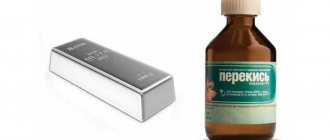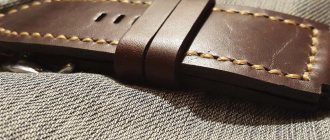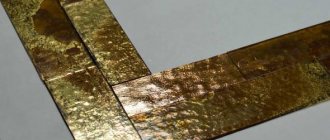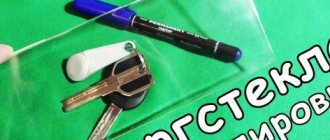Most watch owners wear them every day. Unfortunately, even when worn carefully, the watch inevitably develops minor scratches and abrasions, which spoil the appearance and upset the owner. Of course, there is always the opportunity to contact a watch workshop, where qualified polishing specialists will carry out all the necessary work and return the watch to its original appearance. But, firstly, polishing in workshops is carried out for the entire watch case, and this is not the cheapest service, especially if you want to get rid of only one or two scratches. Secondly, it is advisable to do polishing by “machine” no more than seven times, otherwise the watch will simply turn into an unsightly “remnant”. Professional polishing is recommended to be carried out together with repassage (preventive cleaning and lubrication of the mechanism) once every 3-5 years. In other cases, defects on the case and glass can be removed yourself.
In this article, we will look at some ways to repair cosmetic damage to watches at home.
Is it possible to restore the appearance of a watch yourself?
First, about the appearance of the watch. Manufacturers of branded watches use high-grade stainless steel for the cases of their products. Premium models use lightweight and durable titanium alloys.
Watches of elite brands, made in a gold case, are especially chic. Of these materials, only steel has the greatest strength and resistance to external influences.
A high-quality watch mechanism works for decades, but its glass is not so stable.
The wristwatch, with a case made of powder-coated steel, retains its surface in its original form for a long time. On the contrary, titanium alloys, despite their strength, are excessively soft, so unwanted scratches and even dents appear on them more quickly. The surface of gold cases quickly becomes cloudy and covered with a web of small scratches.
These troubles can be eliminated yourself by simply polishing the product. You just need to be patient and have the necessary materials to help polish your favorite timepiece.
Technically sound watches gradually begin to look worse. This can be corrected by polishing their glass.
Service life
Gold plated items can last quite a long time if used correctly. The gilding does not peel off, but gradually wears off on clothes, skin, and bed linen. Therefore, over time, the appearance of the product will simply deteriorate. The more often you wear such jewelry, the faster it will fade.
On average, 1 micron of gold is abraded per year. But this is only subject to the following recommendations:
On average, the service life of gold-plated jewelry with prolonged wear is 1-2 years. If you care for it properly, this period can increase to 3 years. Even if the gilding layer is damaged, it can be restored.
Watch polishing
Regardless of the quality of the metal and glass from which the watch is made, no matter how terrible scratches and abrasions may look at first glance, such defects are completely eliminated. Polishing glass and watches from scratches with your own hands will not take much of your time.
Polishing will only help if there are abrasions and shallow scratches.
Before polishing your watch, please note that if the case has a protective coating, spraying or matte surface, and the damage is deep enough and you are not confident in your abilities, then it is better to seek help from a watch workshop. Attempts to remove defects or polish them yourself can completely ruin the product.
Amateur attempts to eliminate severe defects can ruin the watch.
What tools should you use?
For those who are used to solving problems without outside help, polishing the surface of a watch, for example, stainless steel or glass, is quite possible.
It will take a little time, patience and materials that are easy to purchase in specialized stores.
In order to organize a home workshop, you will need the following tools:
- Polishing cloth, special;
- Felt, felt or lint-free cloth is the basis for the cleaning paste;
- A nail file with an abrasive coating or sandpaper;
- Fiberglass brush;
- A grinding machine (you can use a rigidly mounted drill) will significantly speed up the process.
- Latex gloves.
Polishes
In addition to tools, you will need consumables to effectively remove scratches, chips and dents on your watch. The most common and accessible means are:
- diamond paste or GOI;
- toothpaste, or better yet powder or chalk;
- special polishing pastes for watch glasses;
- cleaner for metal surfaces;
- mineral oil.
GOI paste is a universal cleaning product that can be used to successfully grind and polish any surface.
After the tools have been prepared and the materials have been collected, you can get down to business.
Case polishing
The work of updating the appearance of the watch surface at home is not difficult, but there is one condition: you need to take into account the type of material from which the watch is made. We remember the characteristics of metals, put on gloves and begin polishing.
Spend a little time - and they will shine like new, and not a trace will remain of minor scratches.
First of all, we clean the surface of the watch from dust and dirt.
To return the natural shine to the gold case and remove plaque, we use a proven product - ammonia. Wet a napkin with a solution of ammonia, a teaspoon per glass of water, and treat the surface.
After drying, polish using felt. To remove scratches from gold, use dental powder or ground chalk, which is applied to felt cloth and polished with careful, circular movements, localized at the site of the scratch.
If the abrasions and scratches are of medium size, then polish the defective areas with a piece of soft cloth, after applying a cleaner or its equivalent to it.
The steel case can be completely treated with GOI paste. It is applied to felt, moving a piece over the surface of the fabric, adding a few drops of mineral oil and starting to gently polish. The oil will soften the abrasive effect of the paste. We repeat the process until the desired quality is obtained.
Do not overdo it with a matte surface, so as not to create gloss. Satining is best done with a regular eraser, for example, from a simple pencil. It is good at eliminating minor defects.
It is usually recommended to use a high-quality eraser to remove scuffs and minor scratches.
To remove light abrasions, a special polishing cloth is preferably used. Problem areas are rubbed with the dark side, the light side is used to add shine.
To repair medium-depth scratches, you will need the same materials as for shallow scratches.
Watch glass polishing
The main disadvantage of wristwatch crystals is clouding. It occurs as a result of constant contact with outer clothing and is a web of micro-scratches. Elimination of this defect, as in the case of the case, depends on the glass material:
- acrylic (plastic);
- mineral glass;
- sapphire with anti-reflection.
If the glass is scratched, you can use one of the methods and sand the glass yourself, taking into account the type of material from which it is made.
Polishing watch glass made of acrylic is carried out with a piece of felt with polishing paste applied to it or chalk diluted with a small amount of mineral oil. Deeper scratches are first sanded with p500-p2500 sandpaper, and then polished.
The main condition is to take your time and be careful.
There are several ways to remove scratches from the surface of mineral glass, the most common are:
- First, sanding from p500 to p2500, then finishing with diamond paste with a gradual transition from coarse to fine.
- Grinding using a Dremel and diamond paste with grit 5-2.5 and finishing with a sanding cloth.
Polishing a watch does not take much time or effort, and every user can perform the procedure.
The sequence of operations performed when polishing glass:
- We remove the glass from the watch and clean the surface of dirt using microfiber.
- Place it on a flat surface and begin sanding with careful, circular movements, trying to maintain equal pressure over the entire area. During the sanding process, do not forget to moisten the surface with mineral oil. We continue the operation until the scratches disappear and the surface becomes matte.
- We apply a special paste to the glass and polish it until perfect transparency is achieved.
- Clean the glass from any remaining paste and insert it into the body.
After finishing work, carefully wipe the bracelet with a dry cloth.
How to clean a silicone watch strap. How to Clean White Leather Products
- Turpentine.
- Wine alcohol.
- Vinegar.
- Soap solution with ammonia.
- Egg whites work well for cleaning gold-plated items. For a better effect, you can add a little Javel water to the protein.
- Alcohol enhances the shine of gilding and is antistatic. Wipe the strap with alcohol, then with a damp cloth and dry.
- You can clean the bracelet with toothpaste. When cleaning, the foam may darken, which means the dirt is coming off. After cleaning, any remaining toothpaste must be removed.
Smart, shockproof and waterproof watches are recommended to be washed regularly. Dirt, dust and sweat that accumulate in the product negatively affect the operation of the sensor. As a result, the clock will show the wrong time.
How to remove scratches, dents and chips
Medium scuffs and scratches can be buffed out with microfiber or felt using a metal cleaner. Polishing is carried out pointwise, in a circular motion until the defect is eliminated. Then clean the glass with a napkin.
A manicure file or nail polishing block will help get rid of chips, deep scratches and small dents on the steel surface. Also, a fiberglass brush is suitable for this purpose. Working with abrasive materials and brushes must be precise and careful so as not to add new damage.
After abrasive treatment, the product should be polished.
It is better not to deal with serious surface defects on cases made of gold, sputtered or coated with precious metals at home and contact a professional craftsman who will sand and renew the coating.
If the product is seriously damaged, it is better to have it polished by professionals in a watch or jewelry workshop.
Things to remember
You cannot soak the bracelet for a long time: not every coating will react happily to this. It may change color or fade.
Also, do not clean the bracelet with abrasive agents: undissolved soda, sand, etc. This can scratch or erase the bracelet's protective coating.
If the watch is expensive and you are afraid to take risks, then it is better to take the watch to a service center: the dirt will be treated with an ultrasonic cleaner, and the stains will be safely removed. In addition, it can be difficult to remove the bracelet from the watch yourself, and soaking the bracelet together with the watch is strictly forbidden.
New jewelry always attracts attention, but over time they tend to get dirty and lose their appeal. Rings, bracelets and chains are the most susceptible to contamination, since they come into maximum contact with the body and other household items. There are methods for caring for gold jewelry that can restore the shine of jewelry.
Features of sapphire glass
A distinctive feature of sapphire glasses is their exceptional hardness, but at the same time they remain very fragile. Such glass is mainly found on branded brands. Therefore, before you polish the sapphire crystal on your watch, ask yourself whether you are up to the task. And to scratch such glass, you need to try hard, you need a very hard material, like diamond.
However, if such a nuisance happens, then it is better to leave the restoration of the transparency of the sapphire glass to specialists.
Sapphire glass, although it has maximum hardness, is at the same time very fragile.
RULES FOR CLEANING GOLD JEWELRY
- Avoid using any cleaning products containing abrasives (pure powders, creams and gels with abrasive particles);
- The cleaning composition should not contain bleaches, otherwise the product will become dull;
- Do not use hard brushes or metal objects to remove dirt. They will, of course, clean the jewelry, but at the same time they will leave a gift on it in the form of scratches. It is best to give preference to pieces of flannel, soft toothbrushes, cotton pads and swabs;
- When choosing a method for cleaning gold jewelry, it is necessary to take into account the quality of the gold (fineness), the presence of stone inserts and their properties. Not all compositions are universal, and those that perfectly clean one piece of jewelry can permanently ruin another.
Professional watch polishing
No matter how prestigious the brand your wristwatch is, over time it loses its luxurious appearance and appeal. Professional polishing and prevention, repassage, of watches is the most effective way to restore an accessory to its former beauty and eliminate external defects formed during use. The need for repassage arises in the following cases:
- the appearance of stains on the body, its tarnishing;
- the presence of scratches, dents and chipping;
- significant damage to the glass.
Repassage is a professional term for preventive repair of watches.
By seeking the help of specialists, you can order high-quality polishing of the case and glass. After which the old but favorite accessory will return the appearance of a branded product, sparkling with fresh tones, which will immediately affect the appearance and image of the owner.
What are watch bracelets made of?
We hasten to please you, dear readers, with the fact that the times when even very well-known watchmakers widely used such ultra-low-cost alloys as brass and alloy for the manufacture of watch bracelets are practically a thing of the past. Not very durable in maintaining a presentable appearance due to the rubbing of the protective coating during active use, such bracelets, in addition to this, also began to oxidize on the inside. As a result, dark stains appeared on the wrist, which did not look aesthetically pleasing and also stained the light cuffs of the shirts. We remember and tell you about this for a very practical purpose, in order to reasonably dispel idle slander about such defectiveness, supposedly universally inherent in any of the metal bracelets. Well, with the possible exception of gold ones. 
So, from the most popular bracelets made of stainless steel, titanium alloy or high-tech ceramics today, if some darkening appears on the wrists, especially in the summer months, then this is only and exclusively due to the significant contamination of these bracelets. Indeed, in recent years, most watch manufacturers have been using low-allergenic stainless steel 316L or its closest analogues even for their inexpensive models. And since this steel is used in jewelry and even in the medical field, it is completely unlawful to blame the unworthy quality of watch bracelets made from it. The same applies to watch bracelets made from titanium alloys, known for their hypoallergenic properties, and high-tech ceramics, the former of which are also 40% lighter than steel, and the latter are distinguished by super-hardness, and therefore increased resistance to scratches.
Therefore, since the bracelets get dirty, you need to learn how to clean them! And quite naturally, the more regularly you do this, the less chance you will have of getting your wrist dirty, and you will be guaranteed to have an impeccably presentable appearance.
Rules for general watch care
A wristwatch is an accessory that is in constant use. We get so used to them that sometimes they seem to be an integral part of us. They say that without a watch is like without hands. In order for this part of us to serve as long as possible, it requires care and attention. Spend a little free time and your watch will shine like new. To extend their service life, try to follow simple care rules:
- After wearing, it is better to put your watch away in a separate box, avoiding contact with other small household items.
- Do not delay replacing cracked glass to prevent dust from entering the dial and mechanism.
- Remove your watch at night to avoid damaging it while you sleep.
- Leave your watch in the locker room when you shower, bath or sauna. High temperatures and humidity will not do them any good.
- Periodically carry out professional preventive maintenance in specialized workshops.
A watch storage box is one of the most popular ways to protect a watch from external influences.
In order to enjoy wearing your favorite wristwatch model for as long as possible, you need to ensure proper care for it. As it turned out, no special effort is required in this direction - your free time, desire and quite accessible materials. But, if you are not sure that you can cope on your own, then repair shops are always at your service.
Regular cleaning will give the product a stylish appearance, extend the life of the mechanism, and remove scratches and damage.
Types of gilding in watchmaking and their features
Gilding of watches can be complete or partial. Both options have certain implementation features.
Full
In this case, all parts of the watch case are covered with gold – the bracelet, the dial, all the clasps. Spraying is applied in a layer of 3-20 microns.
Partial
With partial gilding, plating is applied only to the most significant part of the watch case. Usually - only on the outside of the bracelet. In this case, the inner side remains a different color.
Partial gilding is carried out due to the fact that the parts are subject to rapid abrasion. Approximately 1 micron of gold is erased per year, which causes the appearance of the product to deteriorate. Therefore, only visible parts are covered.











